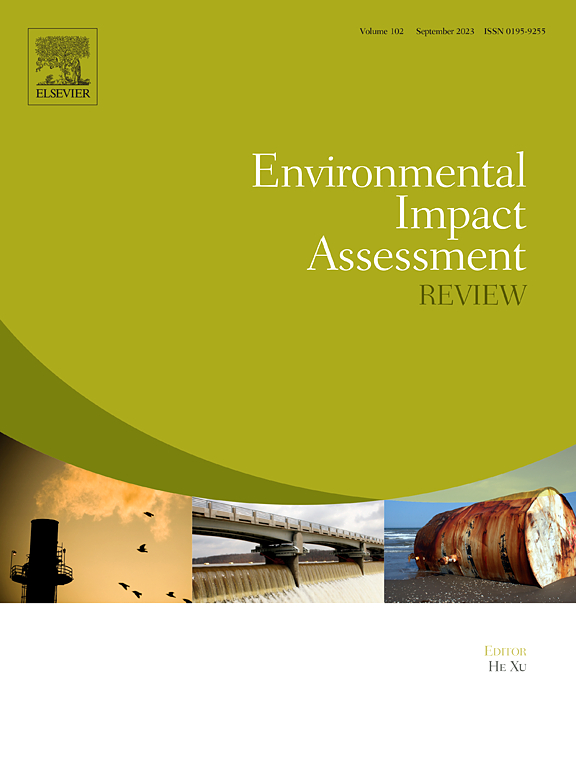Reducing fertilizer and pesticide application through mandatory agri-environmental regulation: Insights from “Two Zero” policy in China
IF 9.8
1区 社会学
Q1 ENVIRONMENTAL STUDIES
引用次数: 0
Abstract
As the intensive application of fertilizers and pesticides (FAP) seriously affects human health and the ecological environment, how to reduce them becomes the key to sustainable agricultural development. Using Chinese crop-level data from 1991 to 2022, this study examines how mandatory agri-environmental regulation reduces FAP application by using “Two Zero” policy (TZP) as an example. The key findings are as follows: First, the implementation of TZP reduced FAP application by 37.2 % and 23.6 %. Second, there are differences in the mechanisms by which TZP achieves FAP reductions. Improvement in technical efficiency is the main means of pesticide reduction. While fertilizer reduction depends on both technical efficiency improvements and the reduction of the proportion of cash crops. Third, there was significant crop, regional, and crop distribution heterogeneity in the effects of TZP. The FAP reduction effect of TZP is more pronounced in cash crops than in grain crops. Pesticide reduction is more significant in the Yangtze River region and South China, but less so in Southwest China. The fertilizer reduction effect is more evident in the Huang-Huai-Hai region, South China, and Southwest China, but is diminished in Northeast China. Additionally, the pesticide reduction effect is particularly pronounced in major grain-producing regions. Finally, TZP has also reduced the intensity of FAP application. The findings offer important insights for China to further reduce FAP application. They also offer guidance for developing similar agri-environmental regulations in other countries.
通过强制性农业环境法规减少化肥和农药施用量:中国 "两个零 "政策的启示
化肥和农药的大量施用严重影响了人类健康和生态环境,如何减少化肥和农药的施用量成为农业可持续发展的关键。本研究利用 1991 年至 2022 年中国农作物层面的数据,以 "两个零 "政策(TZP)为例,探讨了强制性农业环境规制如何减少化肥和农药的施用量。主要结论如下:首先,"两零 "政策的实施分别减少了 37.2%和 23.6%的农药使用量。其次,"两零 "政策实现减少《反倾销协定》的机制存在差异。提高技术效率是减少农药使用量的主要手段。而化肥的减少既取决于技术效率的提高,也取决于经济作物比例的降低。第三,TZP 的效果在作物、地区和作物分布方面存在显著的异质性。与粮食作物相比,经济作物的技术合作方案对减少化肥使用量的影响更为明显。农药减施在长江流域和华南地区更为显著,但在西南地区则不太明显。黄淮海地区、华南地区和西南地区的化肥减量效果更明显,但东北地区的化肥减量效果较弱。此外,农药减量效应在粮食主产区尤为明显。最后,三唑磷还降低了农药残留的施用强度。这些研究结果为中国进一步减少农药施用量提供了重要启示。它们还为其他国家制定类似的农业环境法规提供了指导。
本文章由计算机程序翻译,如有差异,请以英文原文为准。
求助全文
约1分钟内获得全文
求助全文
来源期刊

Environmental Impact Assessment Review
ENVIRONMENTAL STUDIES-
CiteScore
12.60
自引率
10.10%
发文量
200
审稿时长
33 days
期刊介绍:
Environmental Impact Assessment Review is an interdisciplinary journal that serves a global audience of practitioners, policymakers, and academics involved in assessing the environmental impact of policies, projects, processes, and products. The journal focuses on innovative theory and practice in environmental impact assessment (EIA). Papers are expected to present innovative ideas, be topical, and coherent. The journal emphasizes concepts, methods, techniques, approaches, and systems related to EIA theory and practice.
 求助内容:
求助内容: 应助结果提醒方式:
应助结果提醒方式:


